Hand Held Garden Tools
Part 1 - Hand Held Garden tools was presented on 25 January 2014
Part 2 - Constructing a Dutch Hoe and a Garden 'Schete' presented on 01 February 2014
(Right Click the above Links to D/L the Audio Archives.)
| Garden Tools | ||
|
|
||
|
Weed & Root Pick Tool
2 Prong Pick Fork
Overall Length Approximately 7
½ inches
Handle 4 ½ inches, Fork 3
inches
|
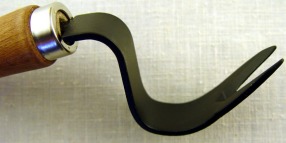 |
|
|
Sickle Straight Edge Small, light grass sickle. Harvesting and Separating/Cutting roots. Blade Approximately 3 inches Wood Handle approximately 6 inches
|
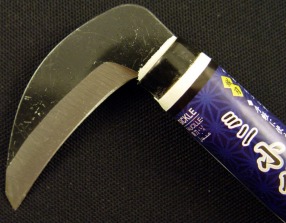 |
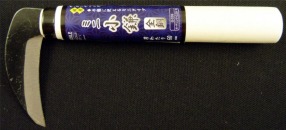 |
|
Large Reaping Hook
Blade Approximately 7 inches Wood Handle approximately 13 inches
|
 |
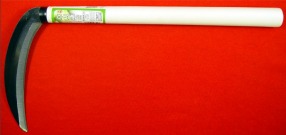 |
|
|
||
|
Hand Plow
In The leaf-shaped blade is thin at the top where it is widest, and thicker at the tip. Opposing curves (convex, side to side and concave, top to bottom) give the thin blade great strength and stability.
|
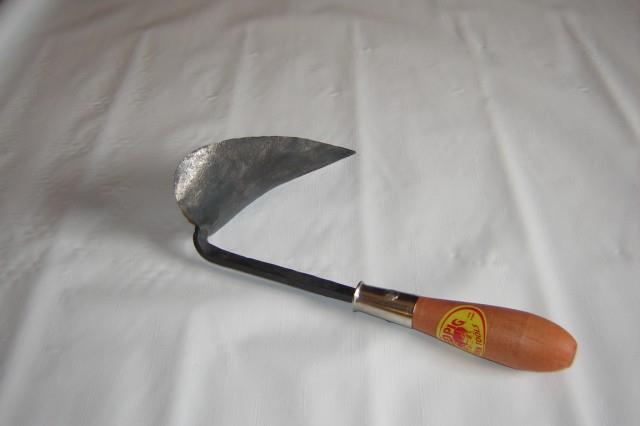 |
|
|
Hori Hori Knife Hori-Hori means “dig-dig”! These knives are multipurpose – weed, plant, divide perennials, even cut sod.
7” Stainless Steel or Carbon Steel blade
Blade is beveled for shoveling
Blade has a serrated edge for sawing
Blade is marked for depth measurement |
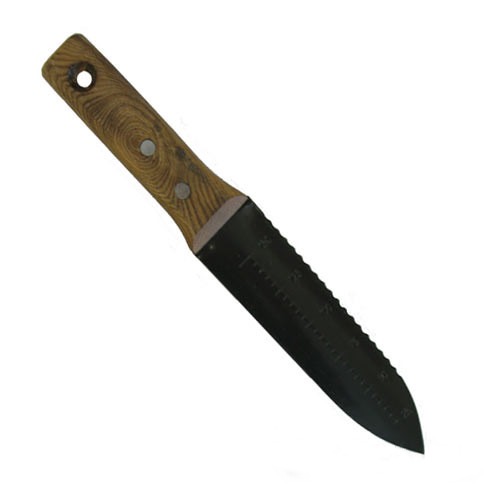 |
|
|
|
||
|
The tool cuts on both the forward and back stroke -- it's a scuffle hoe -- and can be turned on its side and driven in by its point to nick out weeds snuggled up to valuable plants. Properly made, the cape cod weeder has a slight back angle to the blade that makes it exceptionally effective on the pull stroke.
|
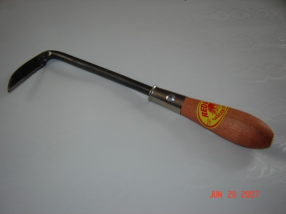 |
|
|
A Row Marker
|
 |
|
|
Dutch Hoe It is unknown
whether these tools originated in What the tools have in common are light, thin blades that are unequally triangular in shape, sharpened on the underside and pitched over to slice almost parallel to the ground. This tool measures just over 18 inches in length with a six-inch wide blade. Since this tool has a wide, shallow bevel it needs to be honed frequently to maintain its superb slicing ability. |
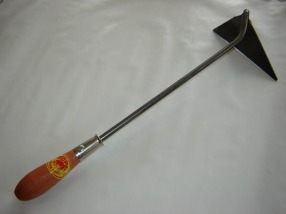 |
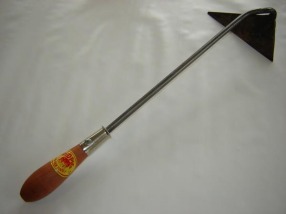 |
|
Two tine fork Forged from 3/8-inch diameter rod. The gently curved, sharply pointed, 6-inch long tines are an inch apart, center to center, leaving a 5/8-inch gap between. Overall, the tool is a foot long Also called a "Jekyll Weeder". |
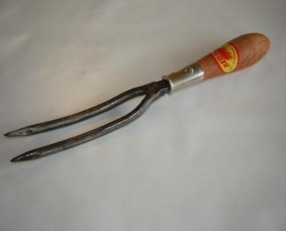 |
|
|
Three tine fork This three tine fork is a stout one with tines of 7/16 diameter steel hammered and ground to a spear point. The head measures 4 1/2 inches wide (about an inch wider than most.) with 5 1/2 inch-long tines. The two outer tines are rolled forward and their tips tilted slightly inward to produce a cupped configuration for better lifting of plants and bulbs |
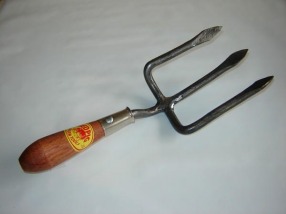 |
|
|
Two & Three tine cultivators It's not hard to find one, three and four tine cultivators. Twos are rare. But a two tine cultivator can be useful. For tilling on both sides of a row of seedlings in one pass, for example. Or for working among plants spaced at moderate intervals, such as bedding plants or tall growing herbs and flowering perennials.
|
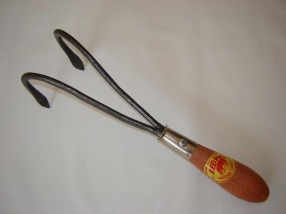 |
 |
|
My Two Tine Cultivators I've been known to make my own variation on the two and three tine cultivators. Mine are made from 3/16" spring steel.
|
 |
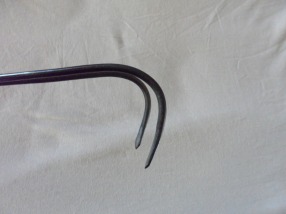 |
|
My Three Tine Cultivators
Again 3/16" spring steel - the third 'leg' is spot welded between the other two prior to twisting.
|
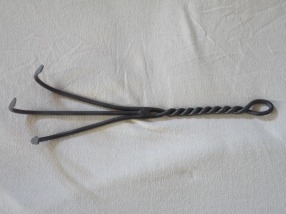 |
 |
|
My 'Dutch' style Hoe
Its 34" long, 1/4" spring steel.
|
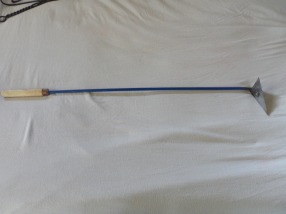 |
|
|
Handle 6" long, 1" diameter dowell. Copper retaining 'ring' made from 3/4"x1/2"long copper pipe.
|
 |
|
|
The shaft is flattened about 2" up from the end. Two holes are drilled 3/4" apart to be used to rivet the blade thru. (I use 10# nails cut down for rivets) The shaft is then bent to roughly 90* about 1.5 inches from the end. |
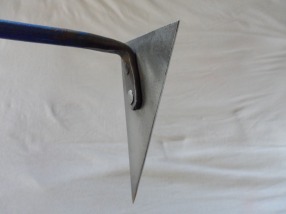 |
|
|
4 1/2 x 2 1/2" Right triangle cut from 3/32" steel plate. The two longer edges are sharpened [after] drilling the mounting holes! Note that the holes are not parallel to any side - you want to have an offset for balance purposes. |
|
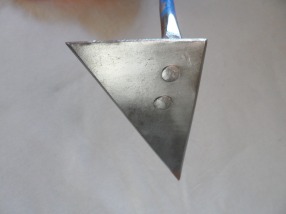 |
|
Home made Garden Schete
21 1/2" x 1 3/4" x 1/8" Soft steel stock.
|
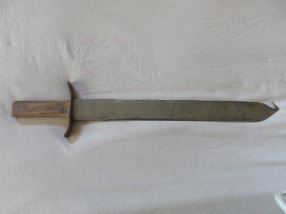 |
|
|
The grips cut from 1 1/4" x 3/8" x 4 1/2 scrap wood. The metal stock had a 1/4" x 4 1/2" relief cut from both edges to make the grip area.
|
 |
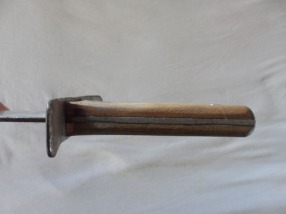 |
|
The hand guard was cut from a strip of 1/8" x1" x 5" stock. It was fitted with a rectangular hole thru it filed to allow the relieved areas of the main blade to fit thru. It was bent to the chosen angle after fitting. |
 |
|
|
|
||